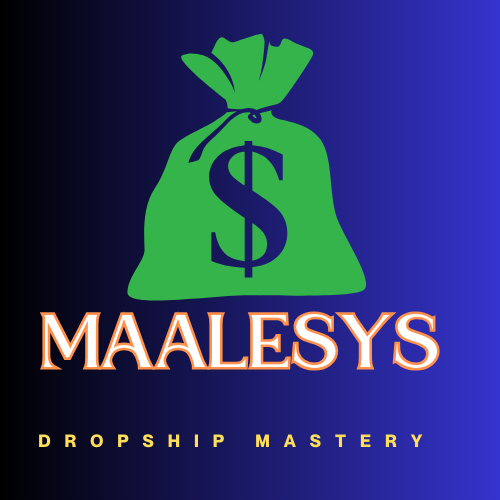Choosing the right ecommerce business model is crucial for your success as an online seller. Two of the most popular options are eBay dropshipping and Amazon FBA (Fulfillment by Amazon). Both models have their pros and cons, and the best choice depends on your goals, budget, and experience. In this article, we’ll compare eBay dropshipping and Amazon FBA to help you decide which is better for your business in 2025. Whether you’re a beginner or an experienced seller, this guide will provide valuable insights to help you make an informed decision.
What is eBay Dropshipping?
eBay dropshipping is a business model where you sell products on eBay without holding inventory. When a customer places an order, the product is shipped directly from the supplier to the customer. This eliminates the need for upfront inventory costs, making it an attractive option for beginners.
What is Amazon FBA?
Amazon FBA (Fulfillment by Amazon) is a service where you send your inventory to Amazon’s fulfillment centers. Amazon handles storage, packing, shipping, and customer service on your behalf. This allows you to focus on growing your business while leveraging Amazon’s vast logistics network.
eBay Dropshipping vs Amazon FBA: Key Differences
To help you decide which model is better for your business, let’s compare eBay dropshipping and Amazon FBA across several key factors:
1. Startup Costs
- eBay Dropshipping: Low startup costs. You only pay for products after a customer places an order.
- Amazon FBA: Higher startup costs. You need to purchase inventory upfront and pay for storage and fulfillment fees.
Winner: eBay Dropshipping (for beginners with limited budgets).
2. Ease of Use
- eBay Dropshipping: Easy to set up and manage. No need to handle inventory or shipping.
- Amazon FBA: More complex due to inventory management and Amazon’s strict requirements.
Winner: eBay Dropshipping (for beginners).
3. Product Selection
- eBay Dropshipping: Wide range of products from various suppliers. You can sell almost anything as long as it complies with eBay’s policies.
- Amazon FBA: Limited to products that meet Amazon’s guidelines. Some categories are restricted or require approval.
Winner: eBay Dropshipping (for flexibility).
4. Shipping and Fulfillment
- eBay Dropshipping: Shipping times depend on the supplier. International suppliers may have longer shipping times.
- Amazon FBA: Fast and reliable shipping through Amazon’s fulfillment network. Prime eligibility can boost sales.
Winner: Amazon FBA (for faster shipping).
5. Fees and Profit Margins
- eBay Dropshipping: Lower fees compared to Amazon. You pay listing fees, final value fees, and PayPal fees.
- Amazon FBA: Higher fees, including referral fees, fulfillment fees, and storage fees. However, higher sales volume can offset these costs.
Winner: eBay Dropshipping (for lower fees).
6. Customer Reach
- eBay Dropshipping: Access to eBay’s 132 million active users. However, eBay’s audience is smaller compared to Amazon.
- Amazon FBA: Access to Amazon’s 300 million active users. Amazon’s global reach and Prime membership can drive more sales.
Winner: Amazon FBA (for larger audience).
7. Branding and Control
- eBay Dropshipping: Limited branding opportunities. Your store is tied to eBay’s platform.
- Amazon FBA: Limited branding as well. Amazon controls the customer experience, and your store is part of Amazon’s marketplace.
Winner: Tie (both platforms offer limited branding).
8. Customer Trust
- eBay Dropshipping: eBay has a trusted platform, but customer trust depends on your seller rating and reviews.
- Amazon FBA: Amazon’s reputation and Prime badge instill trust in customers, leading to higher conversion rates.
Winner: Amazon FBA (for built-in trust).
9. Scalability
- eBay Dropshipping: Easier to scale with low upfront costs. However, competition can be fierce.
- Amazon FBA: Scalable with Amazon’s logistics network, but requires more capital for inventory and fees.
Winner: Tie (both models are scalable but require different strategies).
Pros and Cons of eBay Dropshipping
Pros:
- Low startup costs.
- No need to handle inventory or shipping.
- Wide range of products to sell.
- Easy to set up and manage.
Cons:
- Longer shipping times (depending on the supplier).
- Limited branding opportunities.
- Competition can be fierce.
Pros and Cons of Amazon FBA
Pros:
- Fast and reliable shipping through Amazon’s network.
- Access to Amazon’s massive customer base.
- Prime eligibility boosts sales.
- Amazon handles customer service and returns.
Cons:
- Higher startup costs.
- Strict Amazon policies and requirements.
- Limited branding opportunities.
Which is Better: eBay Dropshipping or Amazon FBA?
The answer depends on your goals, budget, and experience. Here’s a quick guide to help you decide:
Choose eBay Dropshipping if:
- You’re a beginner with limited capital.
- You want to test different products without upfront inventory costs.
- You prefer a simpler, more flexible business model.
Choose Amazon FBA if:
- You have the budget to invest in inventory and fees.
- You want access to Amazon’s massive customer base and Prime membership.
- You’re willing to comply with Amazon’s strict policies and requirements.
FAQs About eBay Dropshipping and Amazon FBA
1. Can I do both eBay dropshipping and Amazon FBA?
Yes, many sellers use both models to diversify their income streams. However, managing both can be time-consuming.
2. Which model has higher profit margins?
eBay dropshipping typically has higher profit margins due to lower fees, but Amazon FBA can generate higher sales volume.
3. Is Amazon FBA more expensive than eBay dropshipping?
Yes, Amazon FBA has higher upfront costs and fees compared to eBay dropshipping.
4. Which platform is better for beginners?
eBay dropshipping is generally better for beginners due to its low startup costs and ease of use.
Final Thoughts
Both eBay dropshipping and Amazon FBA offer unique advantages and challenges. eBay dropshipping is ideal for beginners with limited budgets, while Amazon FBA is better for sellers who can invest in inventory and want access to a larger customer base. Ultimately, the best choice depends on your goals, budget, and experience. By understanding the differences between these models, you can make an informed decision and build a successful ecommerce business.

